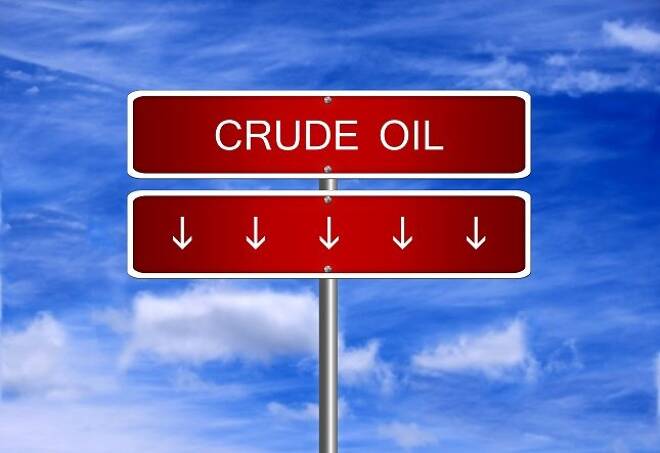Advertisement
Advertisement
Crude Oil Price Analysis for April 24, 2017
By:
Oil prices are down on the week, and while the short-term outlook confronts a continuation of the OPEC output cut when the cartel meets in May, the long
Oil prices are down on the week, and while the short-term outlook confronts a continuation of the OPEC output cut when the cartel meets in May, the long term shows that U.S. output will continue to increase as technology allows shale producers to reduce their costs and increase their recovery rate. Oil bulls had a very bad week. Prices declined approximately 7%, which will definitely get OPEC’s attention. Prices broke through the 50 handle and are poised to test trend line support.
Technicals
Price action looks negative, and crude had little lift throughout the session. There has been little upward momentum, following Wednesday sharp decline, following the worse than expected EIA energy report on inventories. Prices attempted to move higher but were unable to gain any traction and eventually fell by approximately 2.35% on Friday. Support is seen near an upward sloping trend line generated from connecting the lows in August to the lows in November that comes in near 48.10. Resistance on crude oil prices is seen near the 10-day moving average at 52.41.
Prices continue to form a head and shoulder reversal pattern, with price action forming the right shoulder presently. The neckline is near the 48 handle and a break of this level would lead to a test of the 44 regions. Generally, the distance the market can fall is equal to the distance from the neckline to the head which is approximately $10 per barrel.
Momentum has turned negative as the MACD (moving average convergence divergence) index generated a crossover sell signal. This occurs as the spread (the 12-day moving average minus the 26-day moving average) crosses below the 9-day moving average of the spread. The index moved from positive to negative territory confirming the sell signal. The index is printing in the red with a downward sloping trajectory which points to lower price for crude oil. Additionally, the RSI (relative strength index) moved lower with price action, reflecting accelerating negative momentum. The current reading of 36, is still in the middle of the neutral range, which generally reflects consolidation.
Oil Production is on the Rise
Oil production will continue to rise in 2017, rising to approximately 9.2 million barrels a day. With product demand at 9.3 million barrels of gasoline and 5.2 million barrels of distillate, and other demand remaining solid above 5-million barrels a day, the U.S. still has a long way to go to become oil independent. That being said, production is expected to rise to 9.7 million barrels a day in 2018, as frackers continue to pump despite fluctuation prices.
Rig Counts Continue to Climb Foreshadowing Higher Prodution
A prelude to future production was Friday Baker Hughes rig count which saw an increase which is in a string of weekly reminders that US shale will not succumb to the price pressure that OPEC has placed on it. In its fourteenth straight climb, US oil rigs rose another five this week, which reflects added pressure on prices.
Fracking Technology Lowers Costs
U.S. hydro-fracking oil producers have cut their breakeven costs down to $35 per barrels, which makes $50 dollars a barrel a very attractive price. Oil producers can hedge their future exposure using forward prices, locking in robust gains. The technology used by producers has increased to the point where producers can increase production using a app on a phone. Oil wells can now be drilled in 20-days, down from nearly 40-days in 2014. This has also flattened the forward curve as producers hedge using forward contracts.
The Curve is now in Contango
The chart of the forward curve, shows that prices relative to spot are beginning to move higher following a period in February when the market was in backwardation. This means that spot prices were higher than deferred prices. The market has moved into back into contango, as spot prices move below deferred which could be a sign of declining demand for spot oil. This past week’s selloff, saw the curve rise nearly a $1 per barrel, following the 4% decline in spot prices which was driven by the unexpected build in gasoline and the smaller than expected draw in crude oil according to the Energy Information Administration.
OPEC is in Trouble
OPEC is in trouble. The Saudi’s tactics in 2015-2016 were to drive U.S. producers out of business, but instead the same producers reduced costs, and now the Saudi’s will be forced to cut production to keep prices higher. Over the short term, prices should remain buoyed, but at $50 per barrel, the profits are too enticing for many to hold back.
About the Author
David Beckerauthor
David Becker focuses his attention on various consulting and portfolio management activities at Fortuity LLC, where he currently provides oversight for a multimillion-dollar portfolio consisting of commodities, debt, equities, real estate, and more.
Advertisement
